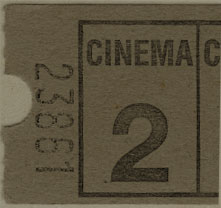Service de ciné-photographie
An Enterprising Civil Servant and a Dynamic Film Archive
Within the government of Quebec, the Ministère de l’Agriculture and the Service provincial d’hygiène (today the Ministère de la Santé) began using film for educational purposes as early as 1920. Joseph Morin was the man behind this move. With the rise in popularity in 16mm film in the 1930s, the Office du tourisme and the Département de l’instruction publique (today the Ministère de l’Éducation) soon joined in and distributed films they produced or acquired from various sources.
On 5 June 1941, when Adélard Godbout, an agronomist turned politician, was elected premier at the head of the Liberal party, the Quebec government created the Service de ciné-photographie to centralise all government film production and act as sole distributor of what its various ministries produced or acquired. It reported to the Executive Committee, and thus directly to the premier. Maurice Proulx, a friend of Godbout’s, participated in the founding of this institution and contributed to establishing its orientation.
A decade later, this “film archive” was making nearly 2,000 documentaries available to its users. Many of these films came from large institutions, such as Encyclopedia Britannica Films and the U.S. Office of Education (especially their French-language versions), from established producers such as Louis de Rochement and Crawley Films, and from organisations such as the Red Cross and the Cancer Society. Others were bought from filmmaker priests such as Albert Tessier and Louis-Roger Lafleur, who made films of ethnographic merit which were representative of the values of their day. The Service de ciné-photographie was so successful that by the late 1940s its loans resulted in some 70,000 screenings annually.
A Quebec NFB?
The Service produced few films, but commissioned them from a variety of filmmakers, including Jean Arsin, Fernand Guertin, Omer Parent and Abbé Maurice Proulx. Its films were sometimes oriented towards tourism, with a touch of nationalism, with the goal of making Quebec better known to its residents in a manner similar to its federal counterpart. Mostly, however, its topics were health education, culture, nature, skilled trades, fine art, etc. In this way, it shared the educational objectives of the National Film Board, without however the same resources or skills base.
During the Second World War, the Service distributed NFB films, thereby contributing to the public’s information about the conflict. This collaboration, however, was short-lived. In 1947, Premier Maurice Duplessis ordered the Service to stop distributing NFB films, in which he saw “communist” tendencies.
In 1961, the Service de ciné-photographie was renamed the Office du film du Québec and was transferred to the province’s Minsitère du Secrétariat. No longer tied to political allegiances, it resumed distribution of NFB films.
- Themes
- 16 mm
- Native Peoples in the Cinema
- The Talkies Arrive
- Television
- French Canadians at the NFB
- Censorship
- Religious Cinema
- Settling the Land
- Film and French language
- Cinema and Religion
- 16mm Exhibition Circuits
- Quebec’s French Cousins in its Cinema
- Colour
- Film Distributors and Exhibitors
- Hollywood in Quebec
- Maria Chapdelaine
- Quebecers in Hollywood
- Radio and Cinema
- The Massey Report
- Film Magazines
- Second World War
- Organisations
- Biographies
- Juliette Béliveau
- Jean-Yves Bigras
- Léo Choquette
- Fifi D'Orsay
- René Delacroix
- J.A. DeSève
- George Ganetakos
- Pauline Garon
- Gratien Gélinas
- Nicole Germain
- John Grierson
- Paul Gury
- Richard Jarvis
- Paul L'Anglais
- Louis-Roger Lafleur
- Herménégilde Lavoie
- Ovila Légaré
- Guy Mauffette
- Joseph Morin
- Fedor Ozep
- Jean Palardy
- Vincent Paquette
- Jean-Marie Poitevin
- Maurice Proulx
- Roger Racine
- Norma Shearer
- Gordon Sparling
- Albert Tessier
To learn more
- Le jardin botanique de Montréal. [Cinecraft Studios, Les documentaires Jean Arsin, Service de ciné-photographie, 1947]
- L’école du succès. Dir. : Henri Michaud [Service de Ciné-Photographie ; Ministère du Bien-Être social et de la Jeunesse, 1952]
- Parade de barques. [stockshot, Service de ciné-photographie, 1947]
- Trois-Rivières. Dir. : Maurice Mongrain [Service de ciné-photographie, Cinecraft Studios, Les documentaire Jean Arsin, 1949]
- Vocation des mains. Dir. : Ross Pitt-Taylor [Associated Screen News, Service de Ciné-Photographie, 1943]
-
Brigitte Banville, Richard Gagnon and Antoine Pelletier, Archives des films et des vidéos: inventaire (Quebec City: Archives nationales du Québec, 1990).
-
Pierre Demers, “Michel Vergnes et le Service de ciné-photographie”, Cinéma Québec, vol. 3, no. 4 (1974): 28-34.
